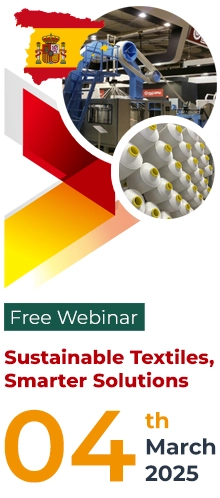Global Cotton Report ; from 1990 to 2018 on Area, production, imports, exports and consumption
The “Global Cotton Report” from Textile Beacon Global Info Services is a compendium covering the trends in global demand, supply and prices of cotton fibre. Time series from 1990 to 2018 on Area, production, imports, exports and consumption is present-ed country-wise all countries across regions of Asia, Africa, Middle East, Central and East Europe, West Europe, CIS, North America, Central and South America, and Oceana.
This Report captures the trends seen in 2018 across the cotton growing and consuming countries and the analysis assesses the pricing trend as events unfolded in 2018.
The Report is richly annotated with authoritative and unbiased objective description and hard-to-find statistics. The report also provides unequivocal views on future potential based on prevailing market conditions in key markets and projections up to 2023-24 marketing year in terms of area, production and apparent consumption.
If you are cotton-based spinner or trader dealing with cotton, this report will be of im-mense usage at all levels of your decision making and particularly will be handy a compendium to refer for its authenticity and crisp analysis. The data has been collated from a myriad of sources after verified the same with industry peers.
GLOBAL COTTON REPORT 2019 – CONTENTS
- GLOBAL COTTON REPORT 2019 – LIST OF TABLES
- GLOBAL FIBRES 2018
- COTTON
- Was 2018-19 A Turbulent Year
- Cotton in 2018-19
- Cotton Prices in 2018-19
- Cotton Market Drivers in 2018-19
- What Lies Ahead for Cotton
- COTTON STATISTICS
- TEXTILE BEACON REPORTS
GLOBAL COTTON REPORT 2019 – LIST OF TABLES
Table 1.1.Growth and Share of Fibres
Table 1.2.Global Supplies of Fibres 2018
Table 2.1. Top Cotton Suppliers and Consumers
Table 2.2. Global Cotton Demand/Supply
Table 2.3. Area under Cotton By Region
Table 2.4. Cotton Production By Region
Table 2.5. Cotton Exports By Region
Table 2.6. Cotton Imports By Region
Table 2.7. Cotton Consumption By Region
Table 2.8. Africa – Demand/Supply of Cotton by Countries
Table 2.9. Africa – Area under Cotton by Countries
Table 2.10. Africa – Cotton Production by Countries
Table 2.11. Africa – Cotton Exports by Countries
Table 2.12. Africa – Cotton Imports by Countries
Table 2.13. Africa – Cotton Consumption by Countries
Table 2.14. Asia – Demand/Supply of Cotton
Table 2.15. Asia – Area under Cotton by Countries
Table 2.16. Asia – Cotton Production by Countries
Table 2.17. Asia – Cotton Exports by Countries
Table 2.18. Asia – Cotton Imports by Countries
Table 2.18. Asia – Cotton Consumption by Countries
Table 2.19.CIS – Demand/Supply of Cotton
Table 2.20. CIS – Area under Cotton by Countries
Table 2.21. CIS – Cotton Production by Countries
Table 2.22. CIS – Cotton Exports by Countries
Table 2.23. CIS – Cotton Imports by Countries
Table 2.24. CIS – Cotton Consumption by Countries
Table 2.25. Central and East Europe – Demand/Supply of Cotton
Table 2.26. Middle East – Demand/Supply of Cotton
Table 2.27. Middle East – Area under Cotton by Countries
Table 2.28. Middle East Cotton Production by Countries
Table 2.29. Middle East – Cotton Exports by Countries
Table 2.30. Middle East Cotton Imports by Countries
Table 2.31. Middle East – Cotton Consumption by Countries
Table 2.32. North America – Demand/Supply of Cotton
Table 2.33. N.America Area under Cotton by Countries
Table 2.34. N.America – Cotton Production by Countries
Table 2.35. N.America – Cotton Exports by Countries
Table 2.36. N.America – Cotton Imports by Countries
Table 2.37. N.America – Cotton Consumption by Countries
Table 2.38.Oceania – Demand/Supply of Cotton
Table 2.39.Central and South America – Demand/Supply of Cotton
Table 2.40. Central and South America – Area under Cotton by Countries
Table 2.41. Central and South America – Cotton Production by Countries
Table 2.42. Central and South America – Cotton Exports by Countries
Table 2.43. Central and South America – Cotton imports by Countries
Table 2.44. Central and South America – Cotton Consumtion by Countries
Table 2.45.West Europe – Demand/Supply of Cotton
Table 2.46. West Europe – Area under Cotton by Countries
Table 2.47. West Europe – Cotton Production by Countries
Table 2.48.West Europe – Cotton Exports by Countries
Table 2.49. West Europe – Cotton Imports by Countries
Table 2.50. West Europe – Cotton Consumption by Countries

























